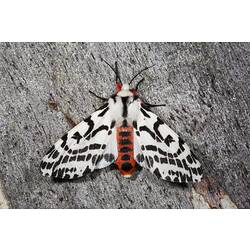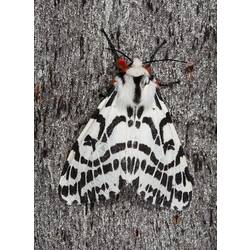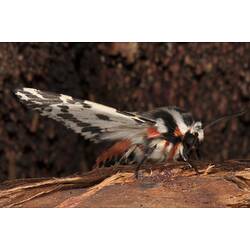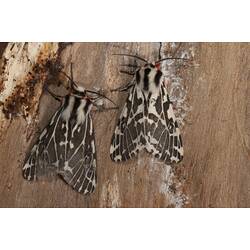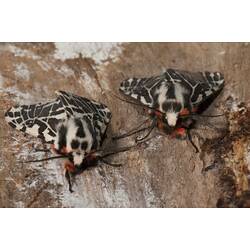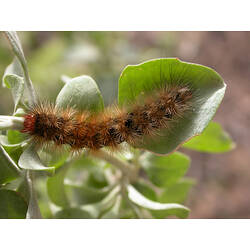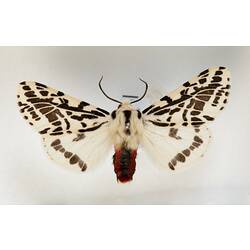General Description
Abdomen red or orange above crossed by black lines at each segment, white below. Thorax and head white with three longitudinal black lines, white with red markings below. Legs quite hairy, reddish near base. Wings white with black markings varying from sparse to dominant. Caterpillars very hairy. Wingspan 45 - 60 mm.
Biology
The very hairy larvae have been observed feeding on a wide range of plants both native and introduced including eucalypts, Senecio, Pultenaea, Olearia, Pine trees and other garden plants. They build a canoe from silk and pupate inside. There are at least two generations each year.
Distribution
Southern Victoria, East Coast from Queensland to Tasmania and South Australia and Western Australia
Habitat
Found in a wide variety of forest and woodland habitats.
More Information
-
Animal Type
-
Animal SubType
-
Brief Id
A large black and white moth with a red abdomen.
-
Colours
Red, Orange, White, Black
-
Maximum Size
60 mm
-
Habitats
-
Diet
Herbivore
-
Diet Categories
Plants
-
Hazards
Hairs of caterpillars don't usually cause irritation but care should be taken if handler has soft or sensitive skin.
-
Endemicity
-
Commercial
No
-
Conservation Statuses
CITES: Not listed, FFG Threatened List: Not listed, EPBC Act 1999: Not listed, IUCN Red List: Least Concern
-
Taxon Name
-
Scientific Author
(Le Guillou, 1841)
-
Common Name
Black and White Tiger Moth
-
Kingdom
-
Phylum
-
Subphylum
-
Superclass
-
Class
-
Order
-
Family
-
Subfamily
-
Genus
-
Species Name
glatignyi


